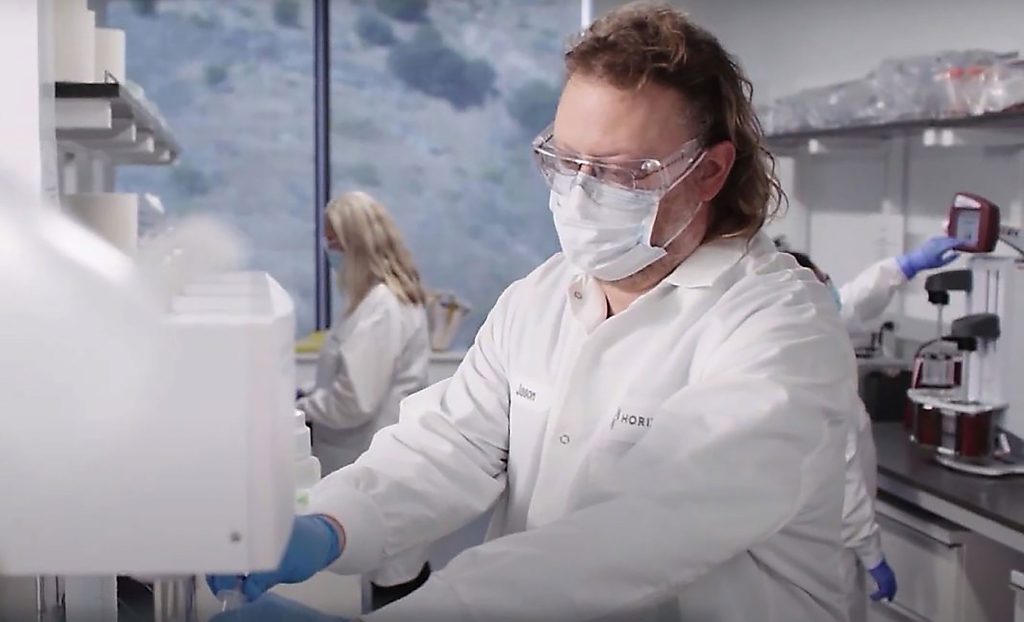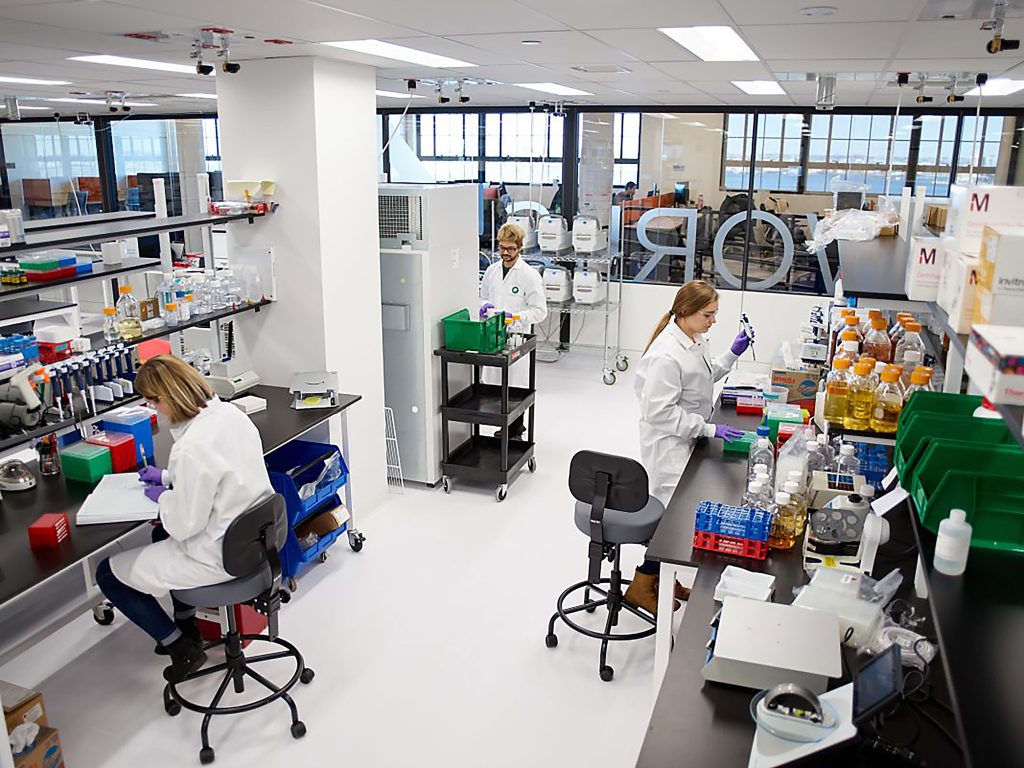Industry predictions for 2023 based on a survey of 150-plus biopharma leaders were recently offered by PPD, Thermo Fisher Scientific’s clinical research business. The biopharma leaders’ expectations could be summed up in one word: “more.” They predicted more decentralization in clinical trials, more platforms for novel therapeutics, more digitalization, more real-world data and evidence, more outsourcing, and more diversity in patient populations. Some of these predictions are among the seven biopharma-related trends that GEN has uncovered in its interviews with experts and other industry stakeholders, and in its reviews of reports and public statements. These trends are detailed in this article.
1. Financing deals: Slower pace to continue

Ernst & Young
The slower pace of private and public financing and the lower values of deals seen in 2022 will continue into this year. This observation was shared with GEN by Subin Baral, partner and global life sciences deals leader of Ernst & Young. He added, “The access to capital that all these companies enjoyed back in 2019, 2020, and the early part of 2021—I don’t think we’ll see that in the near term.”
A total of $16.58 billion in venture capital (VC) was invested in 285 biotech deals during the first three quarters of 2022, according to Evaluate Pharma, down from the record-high $24.51 billion in 446 deals of Q1–Q3 2021. In Q3, $3.6 billion was invested in 56 deals, compared with $7.14 billion and 135 deals a year earlier.
According to IPOScoop.com, 22 biopharma companies priced initial public offerings (IPOs) during 2022 (up to December 8), versus 74 in 2021. Also declining were biotech special purpose acquisition company (SPAC) IPOs, with 10 biotech firms, and another 6 that revealed SPAC plans in 2021, completing mergers with blank-check companies.
2. M&A: Deals poised for comeback
The slowdown in private and public financings is one factor expected to drive merger and acquisition (M&A) deals in 2023, Baral remarked. Other factors include loss of exclusivity (longtime top-selling drugs are nearing the end of patent protection) and the $1.2 trillion amassed by 25 biopharma giants to carry out M&A. The latter factor is what Ernst & Young calls “firepower.”
“The good deals are getting done,” Baral pointed out. “They aren’t getting done just because they are cheap. Deals are getting done because they are the right deals to get done.”
PwC predicts that the value and volume of pharmaceutical and life sciences M&A will bounce back in the new year—but won’t be as robust as 2021: “In 2023, we expect M&A to more closely resemble prior years with a total deal value in the $225 billion to $275 billion range across all subsectors.”
According to PwC, during 2022 (up to November 15), deal value reached $137.8 billion (down 49% from 2021) in 266 deals (down 28%). The year’s largest deal at deadline was Amgen’s $27.8 billion purchase of Horizon Therapeutics, announced December 12, followed by Pfizer’s $11.6 billion purchase of Biohaven Pharmaceuticals, completed October 3.

3. Cancer: Big names bet on vaccines
Industry watchers will be paying close attention to data that is expected to be released by developers of cancer vaccines. One is BioNTech, which in September presented promising follow-up data from its ongoing Phase I/II trial (NCT04503278; 2019-004323-20) assessing its wholly owned novel chimeric antigen receptor (CAR) T-cell therapy candidate BNT211 in patients with relapsed or refractory advanced solid tumors. The trial’s estimated primary completion date is in August.
In September, Merck & Co. exercised its option to jointly develop and commercialize Moderna’s messenger RNA (mRNA)-based personalized cancer vaccine, for which Merck agreed to pay Moderna $250 million upfront. Although primary data for the personalized cancer vaccine was expected in Q4 2022, the trial’s primary completion date is expected to be in September 2024.
“We expect additional readouts of cancer vaccines in randomized trials that will further inform whether recent advances in antigen targeting, vaccine potency, and patient selection were sufficient to overcome the historical challenges,” Daina M. Graybosch, PhD, senior managing director, immuno-oncology, SVB Securities, wrote last summer.
4. mRNA: Beyond COVID-19
Biopharma firms will step up efforts to develop more drugs and vaccines based on mRNA, and to broaden these efforts beyond COVID-19. Last spring, GEN reported on companies applying emerging technologies that included Cas13-encoding mRNA, circular mRNA, programmable mRNA, and self-amplifying mRNA.
A self-amplifying mRNA collaboration that was announced last November could generate more than $4 billion for Arcturus Therapeutics, which will partner with CSL to develop vaccines for COVID-19, influenza, pandemic preparedness, and three undisclosed “globally prevalent respiratory infectious diseases.” Last year began with Pfizer and Beam Therapeutics launching an up-to-$1.35 billion mRNA base editing collaboration.

Shape Therapeutics
Francois Vigneault, PhD, co-founder and CEO of Shape Therapeutics, which develops programmable RNA therapies using artificial intelligence, acknowledged that a continuing challenge for mRNA is duration of response: “Is an acute, very intense response that’s very short lived useful or not? That’s why I think it’s going to be exciting to see the field evolve.”
mRNA has most successfully and lucratively been applied in COVID-19 vaccines, whose top developers reaped billions during Q1–Q3 2022. Pfizer earned $26.477 billion; Pfizer’s partner BioNTech earned €11.413 billion (about $12 billion); and Moderna earned $13.576 billion. In 2023, and possibly beyond 2023, lawsuits will play out between Pfizer/BioNTech and Moderna to settle disputes over mRNA vaccine patents.
5. Cell and gene therapy: More R&D, fewer deals
Growing regulatory acceptance of cell and gene therapies—26 have been approved by the FDA, 4 in 2022 alone—will spur additional development efforts. Kite Pharma, a Gilead Sciences company, in December committed up to $4 billion-plus toward co-development of Arcellx’s multiple myeloma CAR T-cell therapy CART-ddBCMA.
“There’s a lot of collaboration and partnerships that we see,” Baral noted, “and we’ll continue to get early innovation on cell and gene therapies.”
In gene therapy, Bluebird Bio expects to file in the first quarter for FDA approval of its third gene therapy candidate, lovotibeglogene autotemcel (lovo-cel) for sickle-cell disease, after gaining approvals for the other two in 2022.
According to the Alliance for Regenerative Medicine, developers of cell therapies, cell-based immune-oncology therapies, gene therapies, and tissue engineering therapies raised a total $6.4 billion and oversaw 2,093 active trials during the first half of 2022—less than half the $14.1 billion and 11% below the 2,358 trials of H1 2021.
6. Synthetic biology: Biopharma focus
Synthetic biology, or “synbio,” has disrupted industries as diverse as agriculture, food, and fashion, in addition to the biopharma industry. Applications of synthetic biology focused on drug development and manufacturing will be more of a focus this year for at least one of the segment’s largest companies.

Ginkgo Bioworks
“You can expect to see us move more aggressively into biopharma,” Ginkgo Bioworks’ co-founder and CEO, Jason Kelly, PhD, told GEN. He said that Ginkgo sees opportunities in manufacturing products for adeno-associated viruses (AAVs) and capsids, T cells, and RNA. He added, “Those three categories will see us do a lot more deals.”
Ginkgo completed plenty of deals in 2022, including a partnership with Merck & Co. to engineer up to four enzymes toward active pharmaceutical ingredient manufacturing (up to $144 million in milestones). Ginkgo acquired both Circularis Biotechnologies (which developed a circular RNA and promoter screening platform) and Altar (which developed an adaptive evolution platform), both for undisclosed prices. Ginkgo also bought Zymergen for $300 million. “Zymergen’s platform technology is quite good,” Kelly asserted. “We thought it would be better offered as a service and combined with Ginkgo’s platform technology, so that we can do better genetic engineering for more customers.”

7. Regulation: Pricing and politics
Biopharma stakeholders will be watching the effect of the Inflation Reduction Act on drug pricing beyond Medicare. The law lets Medicare set prices for some small-molecule drugs 9 years after FDA approval, versus 13 years for biologics.
“The price controls that the IRA imposes on medicines offered through Medicare may have the unintended consequence of reducing the number of new therapeutics created to respond to unmet medical needs,” warned Jim Greenwood, Alex Pinson, and Jamie Gregorian of DLA Piper.

Ernst & Young
Supporters counter that the law benefits patients through price curbs such as the $35/month cap on insulin. “Where patient affordability improves, manufacturers may also realize some volume offsets,” observed Muna Tuna, U.S. market access, pricing, and reimbursement leader, Ernst & Young.
The drug pricing debate is unlikely to be resolved by a Congress divided between the House of Representatives’ narrow Republican majority and the Senate’s slim Democratic majority, shaken when Arizona Senator Kyrsten Sinema announced that she had left the Democratic Party and registered as an independent.



